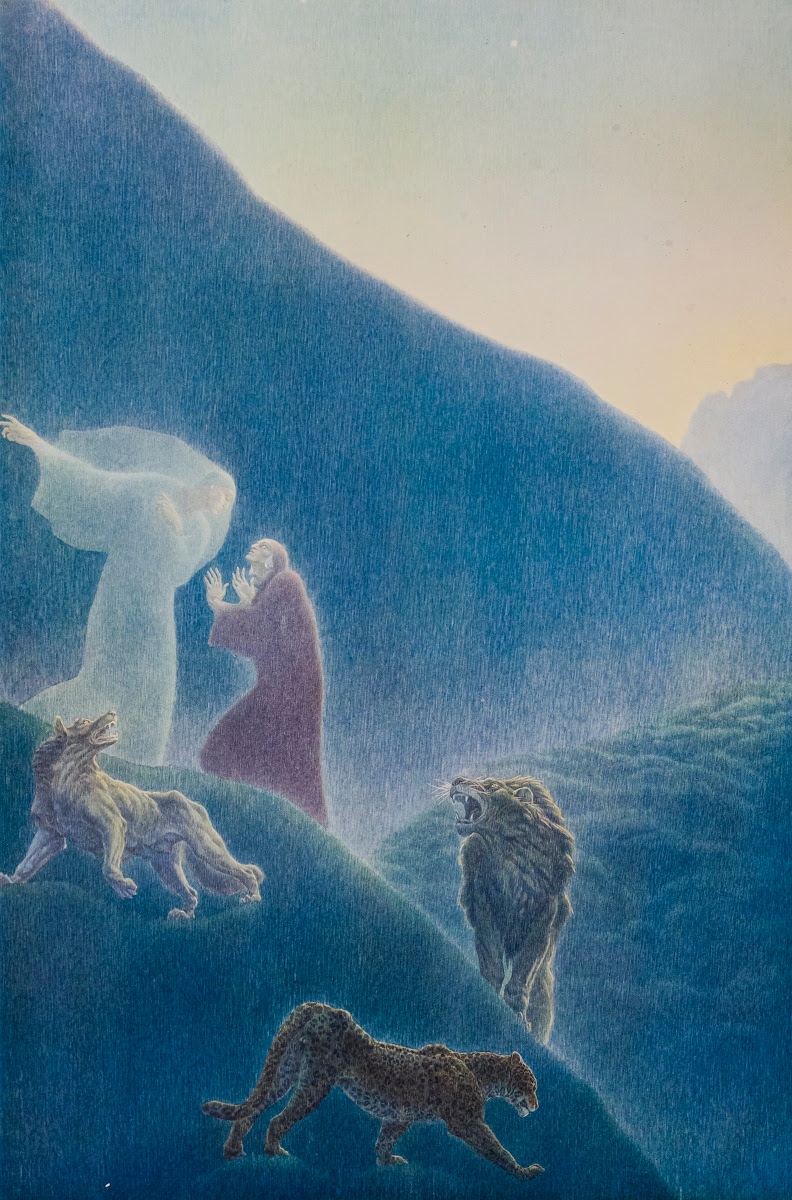“Many artists have interpreted Dante’s afterlife by letting themselves be inspired by the culture and fears of their time. Amos Nattini, between 1915 and 1939, undertakes this great project with passion and dedication, giving us an absolutely human and realistic version of it. His lithographs were published together with the Divine Comedy text in three volumes. The edition of the Cariparma Foundation is dated 1939.” — “Amos Nattini and The Divine Comedy,” Google Arts and Culture, 1900s (Retrieved March 28, 2024).
“The Extra Circles of Hell, A Short Tour”
“There’s a lot of self-righteous assholes out there who think they’re going to heaven. If an afterlife exists, they’re in for a tiny surprise — probably. Dante didn’t know how things would turn out when he wrote the original Divine Comedy. But he knew all about hypocrisy.
“That’s why he created a special circle of hell for each type of sinner. Because they all deserve each other, and their own special punishment.
“Dante originally envisioned nine circles of hell. Just nine? Seriously? We’re gonna need more circles…” –Jessica Wildfire, Splattered, 2019
Read the full article here.
“Protestant Theologians Reconsider Purgatory”
“This Nov. 2, on what is known as All Souls’ Day, Roman Catholics around the world will be praying for loved ones who have died and for all those who have passed from this life to the next. They will be joined by Jerry Walls.
“‘I got no problem praying for the dead,’ Walls says without hesitation — which is unusual for a United Methodist who attends an Anglican church and teaches Christian philosophy at Houston Baptist University.
“Most Protestant traditions forcefully rejected the ‘Romish doctrine’ of purgatory after the Reformation nearly 500 years ago. The Protestant discomfort with purgatory hasn’t eased much since: You still can’t find the word in the Bible, critics say, and the idea that you can pray anyone who has died into paradise smacks of salvation by good works.
[. . .]
“‘I would often get negative reactions,’ Walls said about his early efforts, starting more than a decade ago, to pitch purgatory to Protestants. ‘But when I started explaining it, it didn’t cause a lot of shock.’
“Walls’ major work on the topic, ‘Purgatory: The Logic of Total Transformation,’ was published in 2012 and completes a trilogy on heaven, hell and the afterlife. He also has a popular, one-volume book synthesizing his ideas coming out from Brazos Press, which targets evangelical readers, and is writing an essay on purgatory for a collection about hell from the evangelical publisher Zondervan.” –David Gibson, Sojourners, 2014
Read the full article here.
“Columbia Art League Exhibit Honors Dante With Visions of the Afterlife”
 “CAL’s current exhibit, The Divine Comedy, is grounded in Dante Alighieri’s medieval masterwork, a revealing, often harrowing pilgrimage through the stations of the afterlife. CAL artists responded to Dante’s themes, and everlasting concepts of life beyond our own, in personal and particular ways.
“CAL’s current exhibit, The Divine Comedy, is grounded in Dante Alighieri’s medieval masterwork, a revealing, often harrowing pilgrimage through the stations of the afterlife. CAL artists responded to Dante’s themes, and everlasting concepts of life beyond our own, in personal and particular ways.
“Heaven, hell and purgatory are represented within these images, and relatively well-balanced, CAL education and outreach director Karen Shortt-Stout said. Given the existential troubles of 2020 and early 2021, she thought artists might bend in greater number toward the visual language of fire and brimstone.
David Owen, “The Afterlife: Cutting Back”
 “. . .Keeping murderers and warmakers submerged in boiling blood, for example, is manageable in the near term but cannot be sustained for all eternity, since the energy expenditure required to heat blood forever will eventually constrain even Our ability to undertake other desirable projects, such as the continuance of the universe as a whole. We face a similar energy crisis with regard to evil counsellors, whom We have promised to incinerate everlastingly; with regard to blasphemers, sodomites, usurers, and doers of violence against Us, who must be tortured without end on heated sand; and with regard to Count Ugolino, Archbishop Ruggieri, and others who are permanently frozen in ice. The avaricious could conceivably be put to work ceaselessly twisting the heads of diviners and fortune-tellers, or keeping flatterers covered with filth, or cladding hypocrites in leaden mantles, but not even We can unwrite the terms of Our own first law of thermodynamics.” [. . .] –David Owen, The New Yorker, January 7, 2008
“. . .Keeping murderers and warmakers submerged in boiling blood, for example, is manageable in the near term but cannot be sustained for all eternity, since the energy expenditure required to heat blood forever will eventually constrain even Our ability to undertake other desirable projects, such as the continuance of the universe as a whole. We face a similar energy crisis with regard to evil counsellors, whom We have promised to incinerate everlastingly; with regard to blasphemers, sodomites, usurers, and doers of violence against Us, who must be tortured without end on heated sand; and with regard to Count Ugolino, Archbishop Ruggieri, and others who are permanently frozen in ice. The avaricious could conceivably be put to work ceaselessly twisting the heads of diviners and fortune-tellers, or keeping flatterers covered with filth, or cladding hypocrites in leaden mantles, but not even We can unwrite the terms of Our own first law of thermodynamics.” [. . .] –David Owen, The New Yorker, January 7, 2008
Contributed by Patrick Molloy



